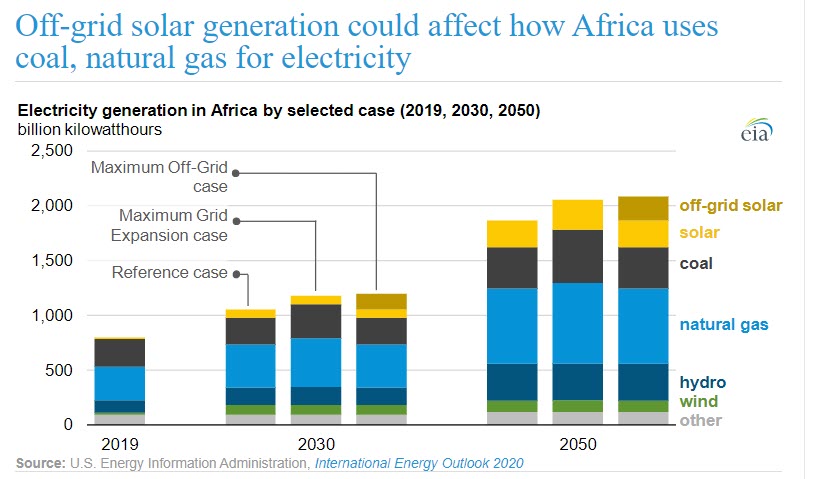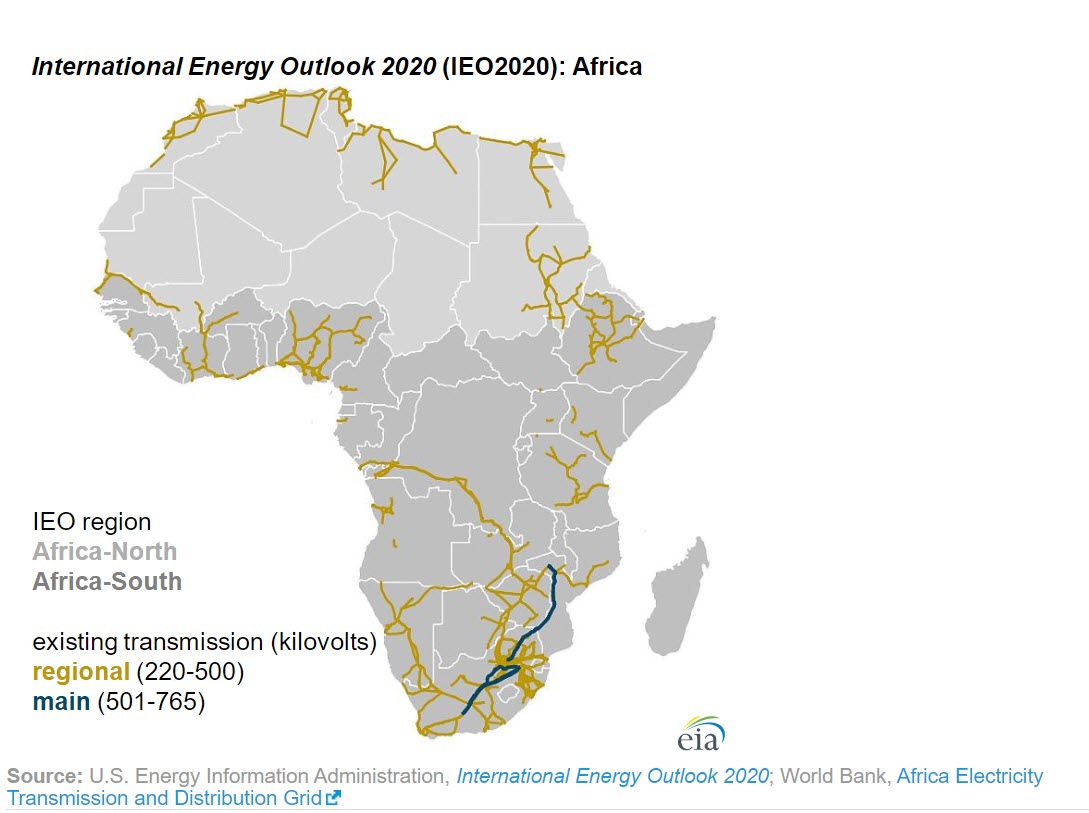EIA
Oil & Gas Publishers Note: Getting a “Balanced diet of power” is critical to get the lowest kWh to all of the people, while being good stewards of our natural resources.
In the International Energy Outlook 2020 (IEO2020), the U.S. Energy Information Administration (EIA) projects electricity generation in Africa using two cases with different assumptions about how future electricity needs are fulfilled. In the Maximum Grid Expansion case, in which a centralized grid is developed to meet electricity demand throughout the continent, EIA projects that solar photovoltaic generators will meet 13% of Africa’s electricity generation in 2050. In this case, EIA’s projections do not include off-grid, stand-alone generators. In contrast, in the Maximum Off-Grid case, where demand growth in the southern half of the continent (Africa-South) is met by off-grid resources, solar energy—from both grid-connected and off-grid systems—will provide 21% of continent-wide electricity generation in 2050.

Natural resource availability and electricity demand profiles vary significantly across the continent. The IEO2019 modeled Africa as one region; however, IEO2020 models Africa using two broad regions, Africa-North and Africa-South, to better represent the diversity of conditions. Most of Africa’s natural gas-fired electricity generating capacity is located in Africa-North, and most of the continent’s coal-fired capacity is located in Africa-South. The Sahara Desert, the largest hot desert (compared with Antarctica and the Arctic, which are both cold deserts) in the world and home to some of the best solar resources on the planet, divides the two regions, constraining the development of interregional transmission and fuel transportation infrastructure.

According to the World Bank, 79% of the population in Africa-North and 48% of the population in Africa-South had access to electricity, whether on-grid or off-grid, as of 2017. For IEO2020, EIA analyzed the impact of achieving full electricity access on the continent by 2030. We reviewed side cases in which incremental electricity demand would be met either entirely by expanding the central grid or by expanding the central grid in Africa-North and developing off-grid solar in Africa-South.
The central grid on the continent has limited reach in rural areas and is unreliable in urban areas, which leads to considering alternative solutions to provide electricity to those without access. Rising use of mini-grid systems as well as the declining costs of solar photovoltaic technology make off-grid solar a possible option for expanding electricity infrastructure in Africa.
Hydroelectric generation and wind-powered electricity generation remain the same across the two case scenarios. However, if electricity demand growth in Africa-South is met by expanding mini-grid systems powered by off-grid solar, EIA projects Africa’s 2050 generation mix will have a larger share of solar (21%) and a smaller share of natural gas-fired or coal-fired generation than it would have had if demand had been met through a centralized grid (13% solar). Although solar generation is greater in the off-grid development case, EIA expects natural gas to remain the most prevalent fuel in Africa’s 2050 generation mix in both side cases.
Principal contributor: Kenneth Dubin

